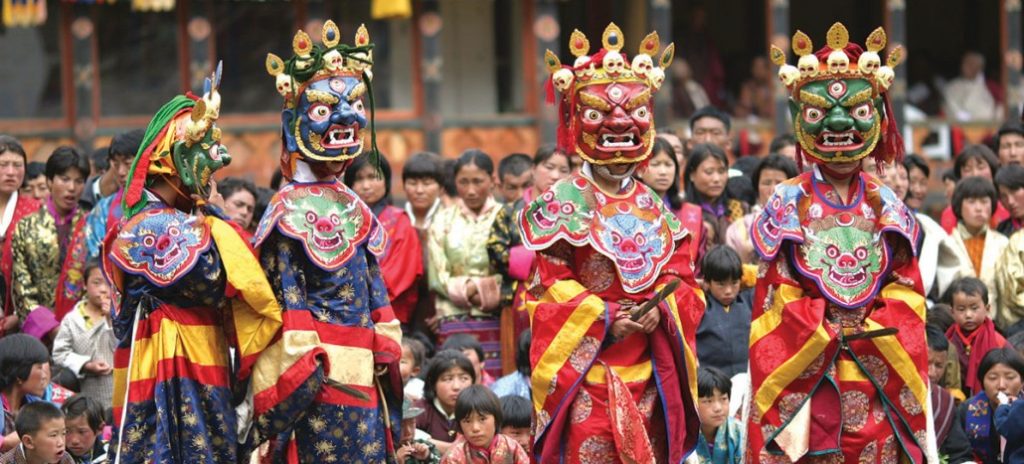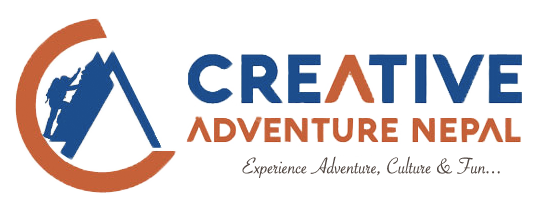
Thimphu Tshechu Festival Tour
Thimphu Tshechu Festival is one of Bhutan's most prominent celebrations. This event is held in Thimphu for three days commencing on the tenth day of the eighth lunar month, which is normally towards the end of September or the beginning of October. Unlike other Tshechu, Lhamo Dromchoe is held a day before Thimphu Tshechu in honor of Lhamo Dudsolma or Palden Lhamo, one of Bhutan's major protecting deities.
The three days of Thimphu Tshechu celebrate Guru Rinpoche, Padmasambhava and were begun by the 4th Desi, Gyalse Tenzin Rabgay in 1,867 AD, with minor adjustments implemented in the 1950s by the third King of Bhutan, Jigme Dorji Wangchuck.
Mask dances known as Cham and folk dances are done to bless bystanders, educate them the Buddhist teachings, protect them from disaster, and expel all bad energies during Thimphu Tshechu, which is conducted at Tendrel Thang, the festival area in front of Tashichhodzong. Attending these festivities is said to confer merit. Dances at the Thimphu Festival beseech the deities to remove misfortunes, improve good luck, and grant personal requests. The Sacred Thongdrol of Guru Rinpoche is unfurled early in the morning on the final day of Thimphu Tshechu, and it is said that the Thongdrol is unfurled at dawn to send blessings to everyone who sees.
During Thimphu Festival Tours, we also visit Paro Town, Punakha, and Wangdue, where we tour Monasteries, Dzongs, monuments, local villages, and farms, as well as engage with the people of the Gross National Happiness Country. We trek to Tiger Nest atop a hanging cliff in Paro, which is the source and inspiration for Bhutanese culture and religion.
Program ( 8 days )
As we approach Paro airport, we get a stunning glimpse of Bhutan's snow-capped peaks. We will drive from Paro to Thimphu. On the route, we stop at Old Bride and see Tachogang Temple, established in the 15th century by Thangtong Gyalpo, who also built other iron bridges around Bhutan.
Today we will go to Kuenselphodrang, where the biggest Buddha statue in Bhutan (167 feet tall) is set on a mound. On our way back, we'll stop at the National Memorial Chorten.
Some of the notables places we will visit are:
- Buddha Dordenma
- Semtokha Dzong
- Sangaygang
- Zilukha Anim Dratshang
- Gangtey Monastery
- Royal Botanical Garden
- Ludrong Memorial Garden
After breakfast, we'll take a short drive to Tashichho Dzong to see the first day of Thimphu Tshechu, which will be hosted at Tendrel Thang, the festival field in front of Tashichho Dzong. People clothed in traditional finery, worshippers gather to Tendrel Thang during the Thimphu Festival to express their beliefs and get blessings.
We will take a short break to see Tashichho Dzong, a magnificent region's stronghold. It was built in 1641 by Zhabdrung Ngawang Namgyel and was renovated in 1962-1969 by the late King, His Majesty Jigme Dorji Wangchuck. It houses the secretariat, the throne chamber, and the King's office, as well as the Central Monk Body. We'll drive to see Archery, Bhutan's national game after the event.
After breakfast, we'll go to the Centenary Farmers' Market, which is only open from Thursday to Sunday. The lively weekend market on the bank of the Wangchu River attracts the majority of Thimphu's inhabitants and many valley residents. The market, which runs from Friday afternoon through Sunday evening, sells a broad variety of delicacies as well as local arts and crafts. After lunch, we travel to Tendrel Thang to see the second day of the Thimphu Festival. In the late afternoon, we visit the National Textile Museum before driving a few minutes to the base of Tango Monastery and hiking up through Rhododendron woodland to the Monastery. Tango Monastery is a Monks' higher education facility with spectacular vistas.
After breakfast, we head to Thimphu Tshechu's religious dance performances blended with traditional dances and Bhutanese martial dances. Following the festivities, we will pay a visit to the Traditional Bhutanese Paper Factory. Producing handmade paper in Bhutan is a centuries-old custom that dates back to the 8th century of Bhutanese history. Then we'll go to Takin Preserve, which is home to Takin, Bhutan's National Animal, which can only be found in Bhutan. This is a very unusual goat family member.
Attend Thimphu Tshechu, Visit the Tibetan settlement in Hontsho or the Indigenous Medicine Hospital in Thimphu.
Today we depart Thimphu and travel sharply uphill through a pine and cedar forest to Dochula Pass (3,100 m). This pass provides sweeping views of the Himalayan mountain ranges and is home to a number of chortens. Then we'll head to Lobesa to see the Chimi Lhakhang Temple on a little hill. This temple is dedicated to the Great Yogi of the 14th century known as Drukpa Kuenley, often known to westerners as the "Divine Madman."
This Temple is said to benefit ladies seeking fertility. Then we will go to Punakha to see the beautiful Punakha Dzong, which is located between the Phochu and Mochu Rivers. This Dzong is the most spectacular in Bhutan and served as the country's capital in the 17th and 18th centuries. The Dzong now serves as the district administration and court office, as well as the winter residence of Bhutan's Spiritual Leader Je Khenpo and the 600 monks of Thimphu and Punakha.
We return to Paro after a brief halt at Dochula Pass for a leg stretch and photos. If you missed the prior day, we can see Bhutan's 200 mile snow-capped peaks in the north on a clear day. We will visit the Drukgyal Dzong in Paro, which was erected in 1647 by Shubdrung Nawang Namgyal. The Dzong was burned down and left in ruins as a poignant reminder of the tremendous triumphs it was designed to celebrate. On a clear day, you can see Mount Chomolhari (7314 m / 23,990 ft) from here.
Then we return to Kyichu Lhakhang, which was established in the 17th century by Tibetan King Songtsen Gonpo. We go to the National Museum of Bhutan (Ta Dzong), which has paintings, handicrafts, costumes, armor, and unique stamps. Afterwards we make our way down to Paro (Rimpung) Dzong. We will board the van after passing across a traditional covered bridge across the river from Paro Dzong.
After breakfast, drive to Paro International Airport for your return flight.

